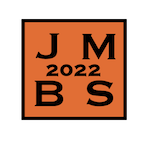Flux balance analysis (FBA) allows us to predict the uptake and production rates of different metabolites and molecules of interest. FBA consists of a set of linear constraints describing the reactions encoded in the genome coupled with an objective function, thus creating a linear program (LP) very efficiently tackled by available solvers. The nutritional environment which affects what and how much a cell can produce and grow is defined through the constraints of a FBA model. Dynamic flux balance analysis (dFBA) allows to consider the inherent temporal dimension of cells as entities immersed in a medium which changes through time either by the cell's own metabolic activity or by the flows of matter and energy through the environment.
Community dFBA consists of a set of differential equations with state variables that include both metabolites and different species concentrations through time, whose dynamics are described by reaction and exchange rates. Some of these rates are given by the state-dependent result of the FBA model of the different cell populations involved in the community. Numerically, solving a system of differential equations implies the computation of at least one FBA per population per time step. Even though LP are numerically very efficiently solved, a batch of LP problems can prove computationally expensive impairing computational exploration of the model.
In order to speed-up computations we propose a metamodelling technique based on Reproducing Kernel Hilbert Spaces (RKHS) that approximates the relationship between inputs and outputs of the FBA models. A learning database was assembled from the FBA outputs and nutrient concentrations obtained from several simulations of the dFBA. This input-output dependence is approximated by projection in an RKHS, which is done in an offline manner. We chose a specific RKHS space, the ANOVA-RKHS, which allows to perform variable selection, inducing additional speed-up.
We used a toy example based on the modelling of Salmonella infection of the colon where two FBA are involved in the differential equations. Replacing the FBA models by their metamodels in the community dFBA speeds up computations by a factor of 45, with a total relative error for the dFBA state variables maintained below 5%.
|
|
|
|
Dynamic Flux Balance Analysis with Metamodels
1 : Centre Inria de l'université de Bordeaux L'Institut National de Recherche en Informatique et e n Automatique (INRIA)
200 avenue de la Vieille Tour – 33405 Talence cedex -
France
|

 PDF version
PDF version
